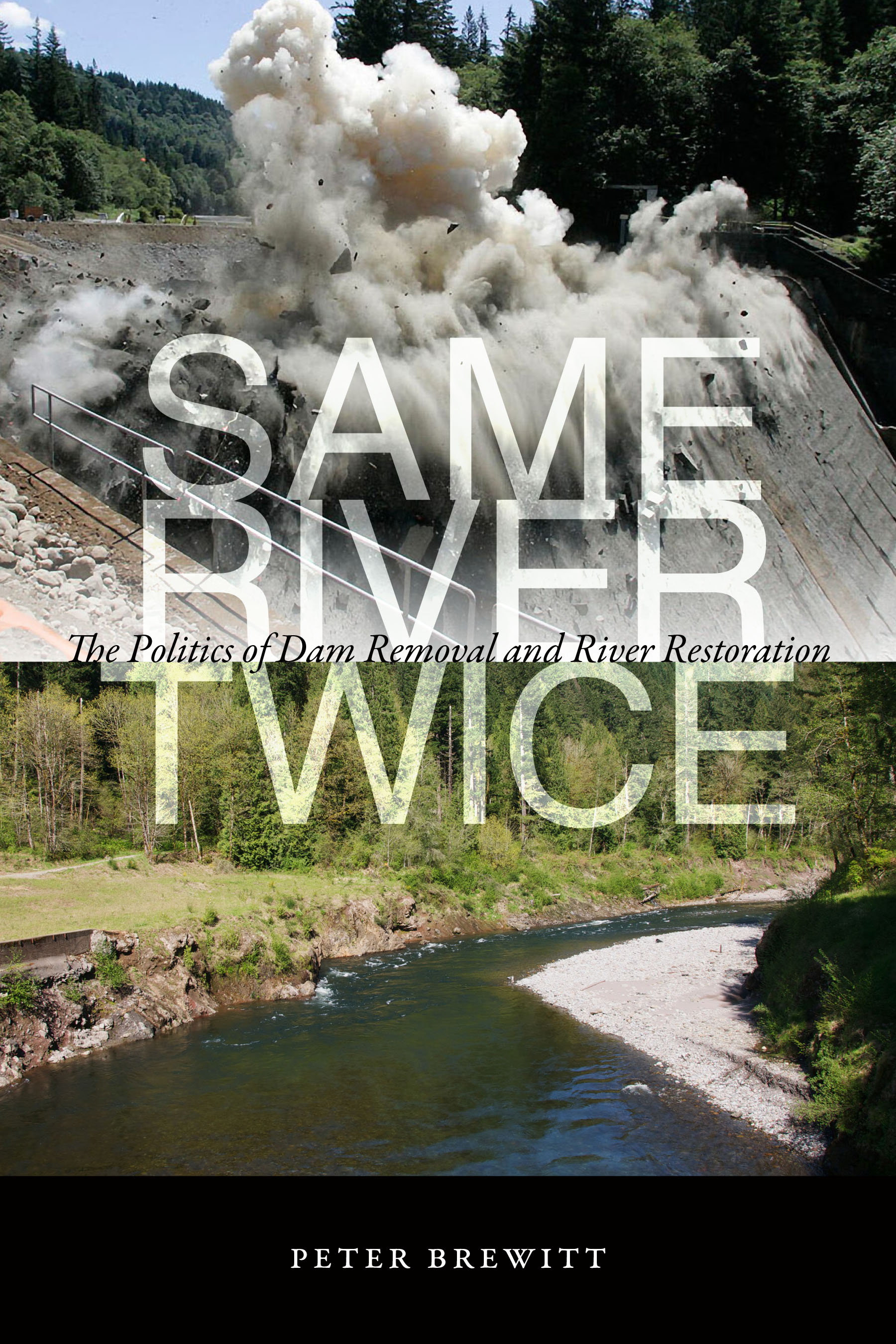Welcome back to Part 2 on our blog series on literature about rivers!
We're thrilled to feature this guest blog post by Peter Brewitt, author of Same River Twice: The Politics of Dam Removal and River Restoration.
*****
There’s always a dam.
The neighborhood where I live in South Carolina is built
around a lake, created by a dam. The pond down the street from my wife’s home
in Vermont? Plugged up by a dam. The environmental studies center where I
teach? Just below one dam, which hides another, older dam – we see it when the
water’s low. This afternoon I biked through Columbus, Ohio, where I attended
the American Society for Environmental History conference earlier this month.
In a brief ride I saw two dams.
Your own streams are surely dammed-up as well; there are 2.5
million dams in this country. If you want to find your own dams, you can check
out the Army Corps of Engineers’ map. But the Army Corps only includes
about 4% of dams, so keep your eyes open. It may take some effort – our local
dams are so routine that we often don’t notice them.
But they shape the waters around us. Along with turning
streams into lakes, dams stop silt from going downstream, fish from swimming
upstream, and water from flowing naturally. They are one-stop shops for
ecological destruction.
Now, to be fair, dams can be useful tools, and every aspect of
human life has some environmental impact. But dams, for the most part, are no
longer offering much benefit in return for the costs they put on nature. 80+
percent of them are past their useful lives.
So we’ve started taking them out. For most of the 20th
century, dam removal was crazy, the province of radicals and novelists. Why,
people asked, would anyone take out a dam? Dams were progress and prosperity
and civilization. Most people didn’t think about the environment very much, and
those who thought about it didn’t have much power. Now in the 21st
century, nearly a thousand dams have been removed, 69 of them in 2018 alone,
according to NGO American Rivers. People are coming to realize that old dams
and degraded rivers don’t need to exist forever.
But in many places, dam removal is
controversial. There are plenty of people who loved the dammed water-scape, and
plenty of people who still can’t believe anyone would take out a dam. The
politics of dam removal – the ways people fight for and against their dams –
are dynamic and passionate. There are few laws about old dams, so people who
care about their rivers, and their dams, are creating a new political
landscape, and a new part of river history, as they go. In Same River Twice, I tell stories of three major dam removals and
the people who made them, as part of the larger story of America’s rivers.
The story continues to evolve. In 2018, dams came out all over
America, from Georgia to Minnesota, from Maine to California. And in Columbus.
Just a little downstream of the last little dam I saw, on the Scioto River, is
a dam removal site. Above it stand the skyscrapers of the city’s busy downtown.
Below them, the river’s returned to its natural channel, and the banks are
lushly recovering. Along the bike path are signs sharing the history of the
Scioto and some semi-technical discussion of its restoration. The Scioto River
runs freely through Columbus.
Learn more about the politics and history of dam removal and purchase Same River Twice here!
PETER BREWITT grew up in Bangkok, Thailand, and East Alton, New
Hampshire. After majoring in history at Dartmouth College, he spent five
years as a naturalist, primarily in Yosemite National Park. He received
his PhD in Environmental Studies from the University of California,
Santa Cruz, where he focused on environmental policy. He is now a
professor at Wofford College, where he teaches and conducts research
about the politics of ecological restoration. Same River Twice is his first book.
